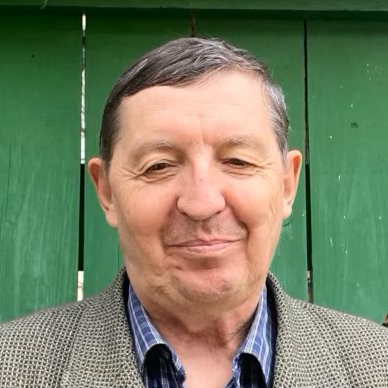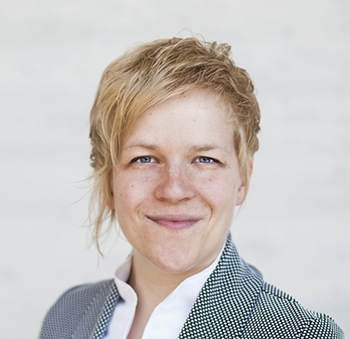Plenary Talks

NAME: Chloé DISKIN-HOLDAWAY
INSTITUTION: The University of Melbourne, Australia
TITLE: Integrating phonetics and discourse-pragmatic variation: the case of just

NAME: Miklós KONTRA
INSTITUTION: Károli Gáspár University of the Reformed Church in Hungary
TITLE: The life and death of the mother-tongue question as a means of linguistic genocide in Hungary

NAME: Manfred STEDE
INSTITUTION: University of Potsdam/Germany
TITLE: Climate Change in Politics: The Case of the German Bundestag
Regular Talks

NAME: Csilla DÉR
INSTITUTION: Károli Gáspár University of the Reformed Church in Hungary
TITLE: Variations of independent (insubordinate) clauses with metalinguistic function in Hungarian
az azóta eltelt több mint két hétben fokozta az iramot. (MNSz2, #2477864, doc#114, lit)
’Ariadne, to put it mildly, has picked up the pace in the more than two weeks since then’
(2) Veszek egy pisztolyt. Végül is – ha már itt tartunk –,
if already here be.Ind.Prs.Pl1
veszélyeztetett lennék, mert az újságírókat biztos sokan veszélyeztetik (MNSz2, #133906500,doc#1045, press)
’I’ll buy a gun. After all, speaking of which, I would be at risk, because journalists are certainly endangered by many people’
Corpus analyzes are performed on the 1.5 million word database of MNSz2 (Hungarian Gigaword Corpus) in six subcorpora (written and spoken press, literature, official, scientific, personal). We use two types of methods:
1) We examine the independent clauses starting with Hogy ‘that’ and Ha ‘if’ in the random sample of 500 hits containing any form (both finite and non-finite versions) of the following verbs of saying: mond ‘to speak’, beszél ‘to speak’, kérdez ‘to ask’,
válaszol ‘to answer’, felel ‘to answer’, összefoglal ‘to sum up’, fogalmaz ‘to formulate’.
2) Using a special CQL query (based on the hypothesis that most insubordinate sentences are usually short in Hungarian), we search for metalinguistic insubordinate clauses – containing 4, 5 or 6 words after the conjunctions – in the whole material of MNSz2.
We seek answers to the following questions:
(3) A ‘ 99-es koncepciót, ha röviden akarok fogalmazni,
if briefly want.Ind.Prs.Sg1 compose.inf
akkor úgy tudom jellemezni a magam
then so know.Ind.Prs.Sg1 characterize.inf the myself
számára és hangosan,
for and loudly
hogy a kérdésfeltevések befejezetlen koncepciója. (MNSz2, #54009629,doc#901, official)
’The concept of ’99, if I want to put it briefly, [then] I can describe it to myself and out loud as an unfinished concept of questioning.’
(4) A Villám géppuskák befagytak a nagy orosz télben, ezek sohasem mondtak csődöt.
Ha fennkölten akarok fogalmazni:
if loftily want.Ind.Prs.Sg1 compose.Inf
a háborúkat egyszerű fegyverekkel és tiszta célokkal szokták megnyerni. (MNSz2, #29188405,doc#529, literature)
’The Villám machine guns froze up in the big Russian winter, [but] these never failed. If I want to put it exaltedly, they win the wars with plain weapons and clear aims’
According to our assumptions, in comparison to non-independent forms, insubordinated clause variants appear in less formal registers (dialogues of fiction texts, written spoken language), but prefer the left periphery (initial) position, as non-independent forms do.

NAME: Jana Pflaeging
INSTITUTION: University of Salzburg
TITLE: Awareness and Sociolinguistic Monitoring: Comparing (ing), (t), Like, You Know and Pauses

NAME: Ben GIBB-REID
INSTITUTION: University of York
TITLE: Creating a functional taxonomy of discourse-pragmatic yeah using inter-rater reliability

NAME: Pertti HIETARANTA
INSTITUTION: University of Helsinki, Finland
TITLE: More equality via translation? Is your boss in your own language still a foreman or is your boss a supervisor?
While a number of these changes are transmitted to other languages via translations, they do not always proliferate all that quickly. Specifically, as far as the Finnish language is concerned, the fact that Finnish lacks grammatical gender and does not distinguish, for example, between male and female personal pronouns like the English he and she, does not necessarily entail that Finnish treats male and female persons more equally in this regard than, say, German or English. In fact, as argued by Engelberg (2002: 128), in the case of Finnish, ‘the so-called feminization of language and explicit, symmetrical gender marking in a gender-language such as German’ may be perceived by Finnish women as ‘discriminatory highlighting’.
This paper is an attempt to look at the current situation of equality or inequality between men and women in a large Finnish-language corpus of just under 600 million words compiled from the Finnish news agency STT news items from 1992 through 2018 (https://korp.csc.fi/korp/#?cqp=%5B%5D&corpus=) to see if androcentricity, i.e. the ‘perception of people as male and male as people’ (Engelberg 2002: 128) is still as strong as it once used to be or if translations from other languages have perhaps made Finnish speakers change their linguistic behaviour in this regard in some ways or in some degree.
Tentatively, on the basis of an examination of a dozen or so highly frequent terms referring to people in various positions and professions, it seems that language does seem to change slowly – very slowly indeed. Old designations die hard.
This is probably explainable by reference to two psychological properties of human beings: first, a change is always a potential threat, among other things, and the human brain seeks to make sure that the environment, the linguistic as well as non-linguistic one, is always as safe as possible; and secondly, as argued by e.g. Baars and Gage (2010: 431), human cognition is not an isolated function but is tightly connected with emotions, including fear, which is likely to explain in part at least why the brain attempts to eliminate conditions which we are not fully comfortable with – like changes in our language, our languages making us to a very great extent what we are.
„Comparing Conlang Translation with Natural Language Translation,” RiCOGNIZIONI 9:18 (2022): 113–120.
“Anglicising Finnish complementation? Examining the rakastan puhua (‘I love to speak’) structure in present-day Finnish,” in Mikko Höglund, Mark Kaunisto and Paul Rickman (eds.) (2018), Changing Structures: Studies in Constructions and Complementation. Amsterdam: Benjamins.
“Cognitive Economy and Mental Worlds: How Much Can They Account for Errors in Translation?” in Silvia Hansen-Schirra, Oliver Čulo, Sascha Hofmann, Bernd Meyer (eds.), Empirical modelling of translation and interpreting, pp. 441–463. Berlin: Language Science Press (2017).

NAME: Ágnes KUNA
INSTITUTION:
TITLE: Discursive patterns of self-justification in conflict narratives of doctors and nurses and its impact on conflict outcomes

NAME: Dóra KOCSIS
INSTITUTION: ImproversGroup
TITLE: Discursive patterns of self-justification in conflict narratives of doctors and nurses and its impact on conflict outcomes

NAME: Márta Csabai
INSTITUTION: Károli Gáspár University of the Reformed Church, Budapest, Hungary
TITLE: Discursive patterns of self-justification in conflict narratives of doctors and nurses and its impact on conflict outcomes

NAME: Adam KONOPKA
INSTITUTION: Collegium Civitas
TITLE: Linguistic transformations of public discourse birth control in communist Poland. Discursive study of press articles from 1956-1989.

NAME: Stephen LEVEY
INSTITUTION: University of Ottawa
TITLE: Learning to sound like a native speaker: Evidence from discourse-pragmatic variation and change
The last three decades have witnessed intensified interest in the investigation of second language (L2) acquisition from a sociolinguistic perspective (e.g., Howard et al. 2013). Within this research context, increasing attention has been paid to the L2 acquisition of target-language (TL) vernacular norms (Labov 1984). This line of inquiry has prompted a number of key questions: To what extent are those norms (in)completely acquired, and how can this be assessed (Howard et al. 2013)? How proficient must learners be in their L2 to master TL vernacular features? What is the role, if any, of L2 speakers’ first language (L1) in mediating the acquisition of TL variables, especially in cases where the variables in question have structural analogues in L2 speakers’ L1 (see e.g., Odlin 2003)? We confront these questions by drawing on three newly constituted corpora recorded from 63 speakers in the Canadian National Capital Region. The first corpus represents L2 English recorded from native Canadian francophones. A second corpus of vernacular English recorded from native anglophones furnishes a local community baseline variety of the TL against which L2 usage patterns are calibrated. A third corpus of local Canadian French represents L2 speakers’ first language (L1).
We present a case study exploring the L2 acquisition of quotative variation and change in the local TL benchmark variety. Our diagnostic measures of L2 acquisition focus on the replication of the TL inventory of quotative variants; approximation of TL variant usage rates; and, crucially, the replication of the TL set of implicit constraints governing variant selection. The triangulation of quantitative evidence across the three corpora factored into our research design reveals that: (i) higher-proficiency L2 speakers closely approximate TL community norms with respect to the use of the innovative be like quotative expression; and (ii) the existence of a parallel linguistic change, être comme, in L2 speakers’ native French arguably has a facilitative effect on the L2 acquisition of TL patterns of variation, as gauged from detailed comparisons of the environmental constraints governing variant selection. Taken together, our findings challenge ubiquitous assumptions that L2 acquisition characteristically involves only partial mastery of TL patterns and constraints (Schleef et al. 2011) and foreground the importance of L1 transfer effects in refining and enhancing our understanding of the (advanced) L2 acquisition of discourse-pragmatic variation and change.

NAME: Raniah Al MUFARREH
INSTITUTION: King Khalid University
Professional Summary: Experienced Director of the Documentation and Archive Center with a background in linguistics and academia. Skilled in communication, time management, and leadership. Currently serving as an advisor at the Administrative Vice Presidency. Passionate about community work and utilizing technology for social development.
Education:
Work Experience:
Research Experience:
Interests:
TITLE: Unveiling Humblebragging Among Arab Influencers

NAME: Károly NAGY
INSTITUTION: Eotvos Lorand University
TITLE: The critical analysis of construction of Turkish national identity in the 2016 translated english republic day speech of recep tayyip erdogan

NAME: Taofeek O. DALAMU, PhD
INSTITUTION: Anchor University, Lagos Nigeria
TITLE: Advertising Agenda: An Expression of Multimodality Landscapes

NAME: Melinda SEBŐK
INSTITUTION: Károli Gáspár University of the Reformed Church in Hungary
TITLE: Pragmatic aspects of silence in János Pilinszky’s art

NAME: Anna ZIĘBA
INSTITUTION: Adam Mickiewicz University
TITLE: Metaverse Metamorphosis: A Critical Exploration of Advertising Discourse and Societal Dynamics in the Digital Realm

NAME: Paloma Batista Cardoso
INSTITUTION: Federal University of Sergipe
TITLE: Negativas: a prototype for searching and classifying negative structures with ‘não’ in speech data

NAME: Brad Mackay
INSTITUTION: University of Salzburg
TITLE: Awareness and Sociolinguistic Monitoring: Comparing (ing), (t), Like, You Know and Pauses

NAME: Dennis PRESTON
INSTITUTION: University of Kentucky
TITLE: Discourse Change: Not So Fast

NAME: Erik SCHLEEF
INSTITUTION: University of Salzburg
TITLE: Awareness and Sociolinguistic Monitoring: Comparing (ing), (t), Like, You Know and Pauses

NAME: Mónika VARGA
INSTITUTION: HUN-REN Hungarian Research Centre for Linguistics
TITLE: „Horribly friendly” – Discourse-pragmatic variation and change in Middle Hungarian registers: the case of negative emotive words and intensifiers
The use of negative emotive intensifiers is a socially and culturally embedded pragmatic feature thus lending itself to variation and change. The lexical meaning of negative emotive intensifiers is associated with negative emotions, but they can be used as intensifying elements regardless of the polarity of the target they modify, e.g. awful and awfully good ‘very good’ (cf. Chang & Shao 2020; Szabó, Vincze & Bibok 2023). The change involves a process called polarity loss or delexicalization. This occurs when a negative emotive word transforms into an intensifier for another word in a neutral or positive context. Nevertheless, there can be found occurrences of these elements both with and without polarity loss in the same time period or from the same speaker.
As the historical aspects of delexicalization of negative emotive words in Hungarian remain understudied (with some references available for Modern Hungarian after 1772 in Szabó, Guba & Szabó 2022 and for 20th-century and more recent data Dér 2013), the present study aims to address this gap. It conducts thorough research using corpus data spanning the 16th and the 18th century, building on the Old and Middle Hungarian Corpus of Informal Language Use containing private letters and documents of witch trials and the Middle Hungarian Corpus of Memoirs and Dramas. An inventory specific to this period was outlined in advance, informed by close readings across various registers, listing intensifiers and other attitude markers of the era (e.g. Varga 2022). The comparison of this inventory to those representing later periods reveals remarkable differences, suggesting that polarity loss predominantly occurred more recently. Besides, there is an instance of a change in the opposite direction (from a neutral, or even negative meaning to positive uses).
The questions of the research are the following: How do the different (evaluative and/or intensifying) functions of the studied negative emotive words vary in usage? At which stage of development are the different elements in the current period? Preliminary studies suggest that the answers to these questions can largely be text-dependent. For instance, the original/lexical meaning of the word rettenetes ‘horrible’ carries a negative connotation. However, instances of its use in a positive context can be traced back to the 17th–18th century, as seen in Miklós Bethlen’s memoir: “Bethlen Gergely és Mikes Kelemen rettenetes barátosok voltak, merő Pilades és Orestes” ‘Gergely Bethlen and Kelemen Mikes were horribly friendly with each other, just like Pilades and Orestes’; in this occurrence, ‘horrible’ describes a very close friendship. The analysis shows the distribution of the studied elements in negative, neutral and positive contexts in order to describe the stages of delexicalization within the specified period and registers (for more recent data, see Dér 2013). The boundaries between intensity and polarity are not straightforward in the historical material. When investigating variation and change, both contextual features (such as the target of the given negative emotive word and the role of collocations and co-occurring patterns) and structural factors are considered. One of these structural factors is iconicity, which explores whether the form of negative words influences speakers’ choices; for instance, this includes the distinction between szörnyű ‘horrible,’ which can function as both an adjective and an adverb, and szörnyen or szörnyűképpen ‘horribly,’ specifically marked as an adverb. Given that not all authors in the corpora use negative emotive words as intensifiers, situational and socio-pragmatic characteristics are also to be dealt with (for Salem witch trials cf. Grund 2021 and for Hungarian witchcraft records see Varga 2019). The letters and memoirs provide insights into the usage by individuals of that period.
To refine the results, the study examines the role of registers based on four text-types, comparing non-fiction and fiction, dialogues and monologues, as well as speech-based and constructed material.